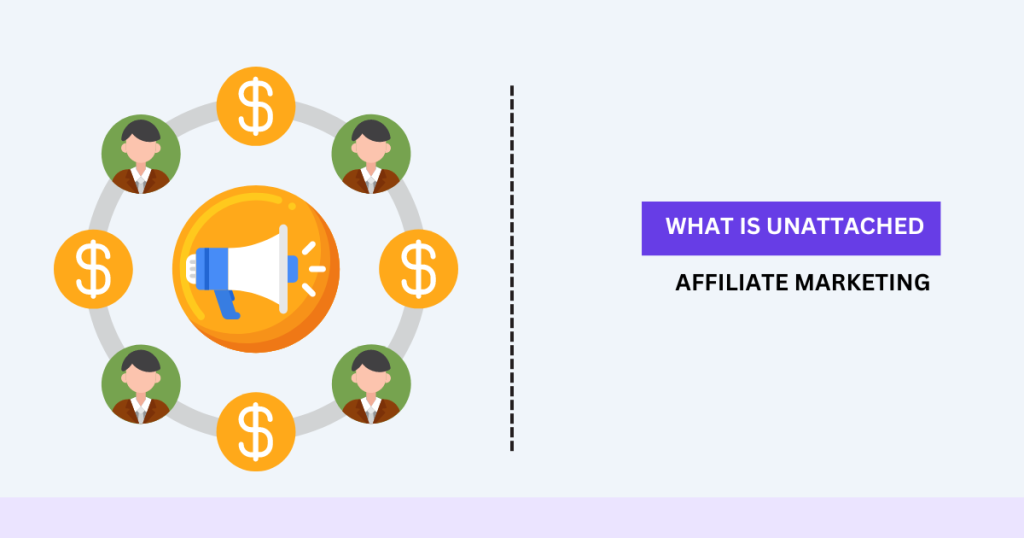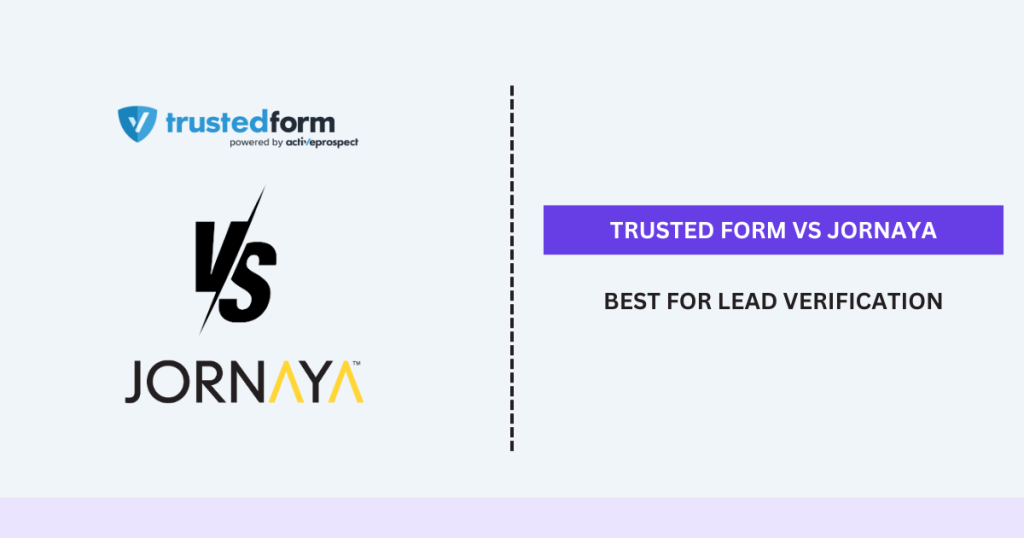Unattached affiliate marketing is a type of affiliate marketing where the affiliate promotes products or services without any personal connection or relationship to them. Unlike other forms of affiliate marketing, such as related or involved affiliate marketing, unattached affiliates do not use, endorse, or have any deep knowledge about the product. Their primary goal is to earn commissions through their marketing efforts, focusing solely on driving traffic and generating sales.
What is Unattached Affiliate Marketing?
Unattached affiliate marketing operates on a straightforward principle: promoting products or services to generate sales and earn commissions. Unattached affiliate marketing offers a flexible and potentially profitable way to earn money online. By focusing on marketing skills and leveraging various tools and resources, affiliates can drive traffic and generate sales without the need for personal connections or endorsements. While it comes with its challenges, a strategic approach, continuous learning, and effective marketing techniques can lead to success in unattached affiliate marketing.
Unattached Affiliate Marketing Example
An example of unattached affiliate marketing would be a marketer running PPC ads for various health supplements. The marketer does not use or endorse these supplements personally but promotes them through targeted ads to generate sales and earn commissions from each sale made through their unique affiliate links.
How to Start Unattached Affiliate Marketing
To start with unattached affiliate marketing, follow these steps:
- Choose a Niche: The first step is to choose a niche or market to focus on. While unattached affiliate marketing does not require a personal connection to the product, selecting a niche can help narrow down the options and target specific audiences effectively.
- Join Affiliate Programs: Affiliates need to sign up for affiliate programs offered by merchants. These programs provide unique affiliate links and track sales generated through those links. Popular affiliate networks include Amazon Associates, ClickBank, CJ Affiliate, and ShareASale.
- Select Products to Promote: Once part of an affiliate program, affiliates can choose products or services to promote. They should consider factors such as commission rates, product demand, and competition.
- Create Marketing Campaigns: Affiliates create marketing campaigns to promote the selected products. This can involve creating ads, and landing pages, and using various marketing channels such as search engines, social media, and email marketing.
- Drive Traffic: The primary goal is to drive traffic to the merchant’s website through the affiliate’s unique links. Affiliates use techniques like pay-per-click (PPC) advertising, search engine optimization (SEO), and content marketing to attract potential customers.
- Earn Commissions: When a customer makes a purchase through the affiliate’s link, the affiliate earns a commission. The commission structure may differ based on the specific affiliate program and product.
Benefits of Unattached Affiliate Marketing
Unattached affiliate marketing offers several advantages, making it an attractive option for many marketers:
- Flexibility: Affiliates have the freedom to choose products from various niches without being tied to any specific interest or expertise. This flexibility allows them to explore different markets and opportunities.
- Low Barrier to Entry: Unlike other forms of affiliate marketing, unattached affiliate marketing does not require personal connections, endorsements, or deep knowledge of the products. This simplifies the process for beginners to get started.
- Scalability: Affiliates can scale their efforts by promoting multiple products across different niches. They can also leverage paid advertising to reach a broader audience and increase their potential earnings.
- Passive Income Potential: Once an affiliate sets up their marketing campaigns, they can earn passive income as long as the campaigns continue to drive traffic and generate sales.
- No Customer Support: Affiliates do not have to handle customer inquiries, returns, or support issues. The merchant takes care of these aspects, allowing affiliates to focus on marketing.
Challenges of Unattached Affiliate Marketing
While unattached affiliate marketing has its benefits, it also comes with certain challenges:
- Competition: The lack of personal connection means affiliates often rely on paid advertising, leading to high competition in popular niches. Affiliates need to develop effective strategies to stand out.
- Trust and Credibility: Without a personal endorsement, building trust with the audience can be challenging. Affiliates must rely on persuasive marketing techniques and high-quality content to convince potential customers.
- Cost: Paid advertising can be expensive, and affiliates need to manage their budgets carefully to ensure profitability. It’s crucial to monitor campaigns and optimize them for better results.
- Constant Learning: The digital marketing landscape is ever-evolving. Affiliates need to stay updated with the latest trends, tools, and techniques to remain competitive and effective.
Tips for Success in Unattached Affiliate Marketing
To succeed in unattached affiliate marketing, affiliates should consider the following tips:
- Research and Choose Profitable Niches: Conduct thorough research to identify niches with high demand and profitability. Look for products with good commission rates and a potential audience.
- Use Multiple Marketing Channels: Diversify your marketing efforts by using various channels such as search engines, social media, email marketing, and content marketing. This helps reach a broader audience and reduces reliance on a single source of traffic.
- Invest in Paid Advertising: Paid advertising, such as PPC campaigns, can drive significant traffic to your affiliate links. Start with a small budget, test different ads, and optimize campaigns for better performance.
- Create High-Quality Content: Even in unattached affiliate marketing, content plays a crucial role. Create informative, engaging, and persuasive content that attracts and converts potential customers.
- Optimize for SEO: Implement SEO strategies to improve the visibility of your affiliate links in search engine results. To boost organic traffic, focus on using relevant keywords, crafting valuable content, and building backlinks.
- Monitor and Analyze Performance: Regularly track the performance of your marketing campaigns. Use analytics tools to measure traffic, conversions, and ROI. Make data-driven decisions to optimize your efforts.
- Stay Updated: Keep up with industry trends, new marketing techniques, and changes in affiliate programs. Joining forums, reading blogs, and attending webinars are great ways to stay informed about affiliate marketing.
- Build Landing Pages: Create dedicated landing pages for the products you promote. A well-designed landing page can improve conversion rates by providing detailed information and a clear call to action.
- Leverage Social Proof: Even if you don’t endorse the product personally, you can use customer reviews, testimonials, and social proof to build trust and credibility with your audience.
- Test and Experiment: Continuously test different strategies, ad copies, and marketing techniques. Experiment with new approaches to find what works best for your audience and niche.
Tools and Resources for Unattached Affiliate Marketing
To excel in unattached affiliate marketing, affiliates can leverage various tools and resources:
- Affiliate Networks: Platforms like Amazon Associates, ClickBank, CJ Affiliate, and ShareASale offer a wide range of products and services to promote.
- Ad Networks: Use ad networks like Google Ads, Facebook Ads, and Bing Ads to run PPC campaigns and reach a broader audience.
- Analytics Tools: Tools like Google Analytics, SEMrush, and Ahrefs help track and analyze the performance of your marketing campaigns.
- Content Creation Tools: Tools like Canva, Grammarly, and BuzzSumo assist in creating high-quality content and visuals for your marketing efforts.
- SEO Tools: Tools like Moz, Yoast SEO, and Ubersuggest help optimize your content and improve search engine rankings.
- Landing Page Builders: Platforms like Leadpages, Unbounce, and ClickFunnels enable you to create effective landing pages for your affiliate products.
- Email Marketing Software: Use email marketing tools like Mailchimp, AWeber, and ConvertKit to build and nurture your email list.
- Web Hosting: Reliable web hosting services like Bluehost, SiteGround, and HostGator ensure your website and landing pages run smoothly.
- Training and Courses: Invest in affiliate marketing courses and training programs to enhance your skills and stay updated with industry trends.
Whether you are a beginner looking to enter the world of affiliate marketing or an experienced marketer seeking new opportunities, unattached affiliate marketing provides a viable path to explore. Start by choosing a niche, joining affiliate programs, creating marketing campaigns, and continuously optimizing your efforts. With dedication and persistence, you can build a successful unattached affiliate marketing business and achieve your financial goals.
You can also check out my detailed blog post on Consulente Digital Marketing.



